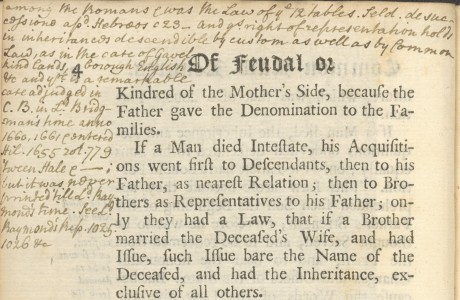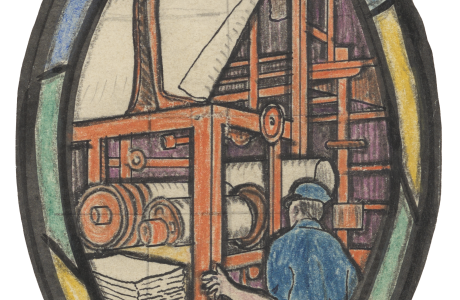Monuments of Imperial Russian Law: Blackstone in Russian

Blackstone, Sir William (1723-1780). Istolkovaniia angliiskikh zahonov [Commentary on English Laws of Mr. Blackstone]. Moscow, 1780-82. 3 vols. Special Collections, Harvard Law School Library
Catherine II became aware of Blackstone’s Commentaries on the Laws of England (1765-69) through the French translation. It became her bedside book, replacing Montesquieu, and greatly influenced her ideas on law and administration. Only volume I of Blackstone was translated into Russian, at her behest by S.E. Desnitskii (c. 1740-1789), the Glasgow-educated first Russian professor of law, and A.M. Briantsev (1749-1821). While Catherine had a special need for the book, it was part of her larger commitment to translations expressed in the establishment of a Society for the Translation of Foreign Books, which survived until 1783 and which she subsidized handsomely.
Among the 700 pages of notes which Catherine II took while reading Blackstone were drafts for a High Court of Justice. On her trip to the Crimea in 1787 Catherine II took her notes on Blackstone and her Nakaz with her to compare the two texts and work on further plans for constitutional reform. Her scheme for a High Court of Justice drawn from Blackstone seemed to combine legislative features of Parliament in England with judicial elements. Her contemplated High Court would have chambers consisting of appointed councilors and assessors elected by the local nobility, urban dwellers, and State peasants.
Blackstone wrote approvingly of Catherinian reforms in penal law:
“Was the vast territory of all the Russias worse regulated under the late Empress Elizabeth, than under her more sanguinary predecessors? Is it now under Catherine II less civilized, less social, less secure? And yet we are assured, that neither of these illustrious princesses have, throughout their whole administration, inflicted the penalty of death; and the latter has, upon full persuasion of its being useless, nay, even pernicious, given orders for abolishing it entirely throughout her extensive dominions.” – William Blackstone, Commentaries on the Laws of England, vol. 4, p. 10.
See: I. de Madariaga, Catherine the Great: A Short History (1990).
“Monuments of Imperial Russian Law,” curated by William E. Butler and Mike Widener, is on display Mar. 1 - May 25, 2012, in the Rare Book Exhibition Gallery, Level L2, Lillian Goldman Law Library, Yale Law School.


